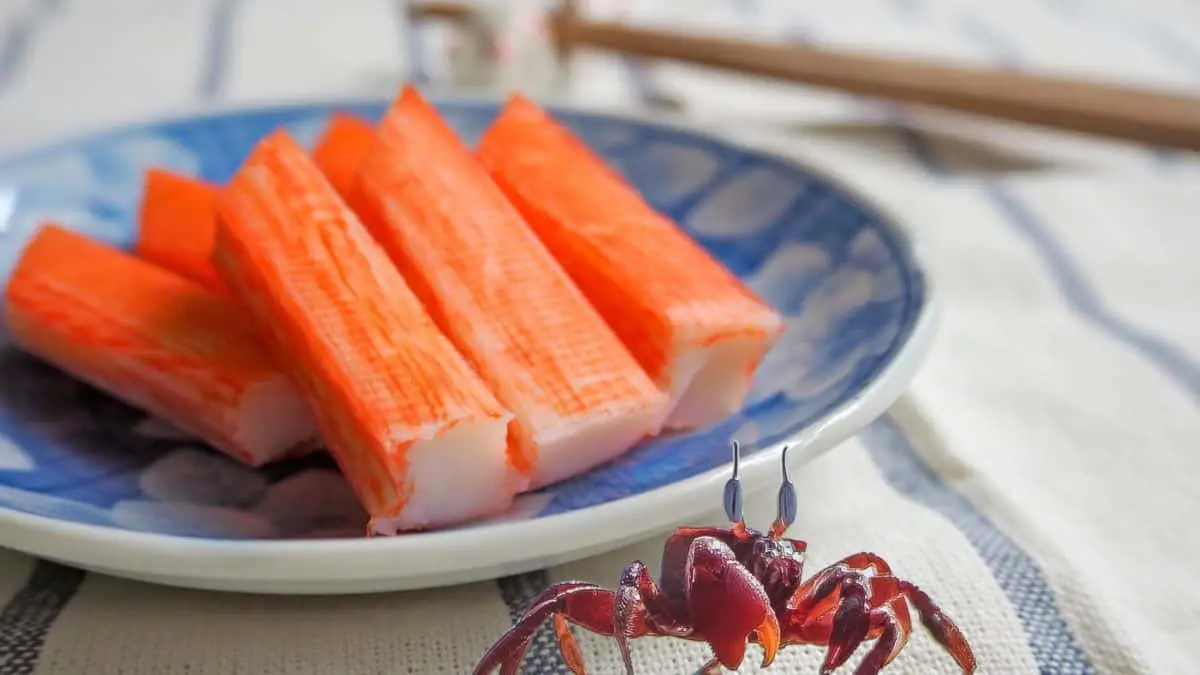Finally Explained: Kani VS Kanikama VS Surimi VS Snow Crab
There is a lot of confusion about the different types of crab – kani, kanikama, surimi, and snow crab. I’m here to clear things up.
They are all very similar, but somehow just a little bit different.
It’s in these nuances that lies the explanation.


Check out our new cookbook
Bitemybun's family recipes with complete meal planner and recipe guide.
Try it out for free with Kindle Unlimited:
Read for freeIn this post we'll cover:
What is kani?
Kani means crab in Japanese and it can refer to the live crab or crab meat you eat. Snow crab is also a live crab and is therefore a type of kani.
What does snow crab taste like?
Some people say that snow crab tastes like lobster, but I personally think it has a more delicate flavor.
It’s slightly sweet and briny and has a firm texture, which makes it one of the most cooked with crabs.
What other crabs are used in Japanes cuisine?
There are three other popular crabs in Japan: the blue crab, stone crab, and king crab. All of these have a different taste and slightly different textures, but they are all considered to be kani.
What is kanikama?
Kanikama is imitation crab made from surimi, which is a paste made from whitefish, not crab. It’s usually made from pollock or other types of whitefish.
It has the word kani in it because it’s made to resemble crab meat in both taste and texture.
A lot of seasonings are added to give it that taste, and almost always a little bit of kani, or crab is added as well, though it usually doesn’t contain more than 2% crab.
Crab is expensive you see, and that’s why the kanikama was invented, because that’s cheap.
The kama part comes from the word kamaboko, which means fish cake. Kanikama or “kani-kamaboko” is a type of kamaboko.
Kamaboko is also made with the same fish paste, but with different seasonings and no crab meat. Kamaboko is usually referred to as the pink smooth fish cakes, but in reality it can be any type of fish cake and those smooth pink ones are also just one type.
What does kanikama taste like?
Kanikama is is a little bit sweet and rubbery and tastes like crab meat when added to a whole dish to cover up the taste a bit, because if you eat it by itself it doesn’t really taste like crab, just like a sweeter artificial version.
Also read: this recipe shows you how to turn kanikama into a delicious salad in under 10 minutes
What are surimi snow crab legs?
Surimi snow crab legs are not real crab but white fish paste, flavored with artificial seasoning and often 2% crab meat, molded into larger chunks to resemble meat pulled out of snow crab legs.
Surimi vs kanikama
Now we are at the surimi part, because there’s a lot of confusion in that name as well. Oftentimes, imitation crab sticks are called “surimi”, but surimi is the fish paste it is made out of.
Remember the fish paste for kanikama and kamaboko?
Those surimi sticks or crab sticks are actually called kanikama.
Surimi is the paste made from whitefish and can be used in various different ways to flavor each kamaboko fish cake differently.
Surimi is almost tasteless and can therefore take on any flavor you want. Some kamaboko use it with starch and shellfish and crab meat to make it taste like artificial crab, like the kanikama, other variants use it with fish sauce and mirin to make it taste like fish or other Asian fish cakes.
So surimi is not a surimi stick, but a tasteless paste ready for further processing.
Conclusion
Wow, I felt like we went through that pretty quick there, but that’s all the differences and nuances of kani, kanikama, surimi, and snow crab.
Also read: how to make delicious and crispy kamaboko wontons
Check out our new cookbook
Bitemybun's family recipes with complete meal planner and recipe guide.
Try it out for free with Kindle Unlimited:
Read for freeJoost Nusselder, the founder of Bite My Bun is a content marketer, dad and loves trying out new food with Japanese food at the heart of his passion, and together with his team he's been creating in-depth blog articles since 2016 to help loyal readers with recipes and cooking tips.
